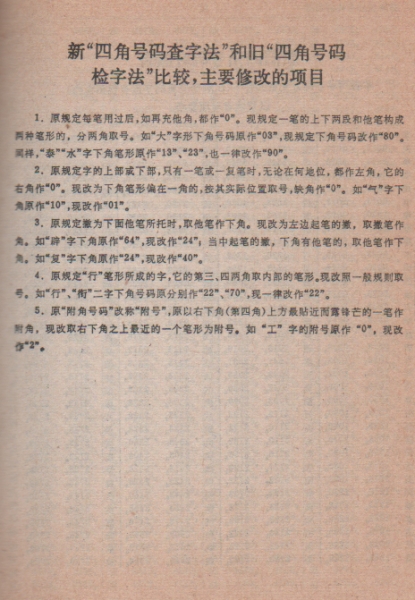部首之间的空间关系及汉字的字形结构
Dr Youxuan Wang
University of Leeds
2011-10-25
In our three-step analytic approach to the study of Chinese characters, we see a character first as the configuration of radicals. We divide the character into sections, and figure out how the sections are spatially related.
Take the word "谢" (from the expression"谢谢") for example. In this case, we will see this character as a structure made up of the three building blocks: "讠" ,"身" and "寸" which are arranged horizontally from left to right.
To begin with, we want to find out as to how many building blocks there are in a character and want to know how these buidling blocks are spatically arranged. Different words may have the same or different number of building blocks; and their building blocks may or may not be configured in the same way. By classifying the various ways in whcih the radicals are spatially arranged in a character into a finite number of types, we can learn to write Chinese characters more efficiently.
Different analytic systems give different classifications. A widely known classification is the list of 15 configurations attributed to Fu Yonghe (傅永和, 1989).
1. Indivisible figuration (独体结构),e.g.:
五、一、乙、无、午、车
"五" is not subject to further spatial division.
2. Left-to-right 2-part configuration (左右结构),e.g.:
语、好、汉、行、妈、妹、谁
"语" features a left-right configuration of '讠' and '吾'.
3. Top-to-bottom 2-part configuration (上下结构), e.g.:
哥、怎、志、爸、苗、字、去、杂
"哥" features a configuration of "可" and "可", with one standing on top of the other.
4. Left-to-right 3-part configuration (左中右结构), e.g.:
啊、谢、彬、湖、棚、椭
"湖" features a three-part structure in which the radical "古" is flanked by radicals "氵" and "月".
5. Top-to-bottom 3-part configuration (上中下结构), e.g.:
奚、蓝、髻、禀、亵
"奚" features a top-middle-bottom configuration of "爫","玄" and "大".
6. Top-right enclosure (右上包孕结构), e.g.:
句、包、可、司、式 、寸、马
"包" shows "勹" closing in on "巳" from top and right sides.
7. Top-left two-side enclosure (左上包孕结构), e.g.:
庙、灰、病、房、屋、尼、有
"庙" features "广" closing in on "由" from top and left side.
8. Left-bottom two-side enclosure (左下包孕结构), e.g.:
还、进、这、建、连、毯、尴
"还" features "辶" closing on "不" from the left and bottom sides.
9. Right-bottom two-side enclosing (右下包孕结构), e.g.:斗
"斗" features an enclosure by "十" from the right and bottom sides.
10. Top-down three-side enclosure (上三包孕结构),e.g.:
同、问、闹、周、闻
"问" features a "口" sourrounded by "门" from top, left and right sides.
11. Bottom-up three-side enclosure (下三包孕结构),e.g.:
击、凶、函、画
"凶" features an enclosure from left, bottom and right sides .
12. Left-right three-side enclosure (左三包孕结构),e.g.:
区、巨、匝、匣
"区" features an enclosure from top, left and bottom sides.
13. Four-side complete enclosure (全包围结构),e.g.:
困、国、园、圆、图、囚、团、因、囹
"困" features a "木" surrounded by the four walls of "囗" .
Note that any part of the above configurations may be further divided. For example, the left-hand side of no. 2 configuration (e.g. 收) can be split into two levels, and the shape of the character as a whole will thus result in a no. 14 configuration (e.g. 数). The right-hand side of the no. 2 configuration can similarly be split into two rows, and the whole character will result in no. 15 configuration (e.g. 楼). Likewise, the upper part of no. 3 configuration (e.g., 思) can be divided into two colomnes and the whole character (e.g. 想) will become no. 16 configuration.
14. Left-right two-part configuration with the left hand side split into two levels, e.g.:
数,别、劲、敬、歌
15. Left-right two-part configuration with the right-hand side split into two levels, e.g.:
博、播、镄、喝、拐
数,别、劲、敬、歌
15. Left-right two-part configuration with the right-hand side split into two levels, e.g.:
博、播、镄、喝、拐
16. Pyramid configurations: two levels with the bottom level split into two parts (金字塔结构),e.g.:
品、飝、飍、 龘、 馫
17. Top-bottom two-level configuration with the top level split into two parts, e.g.:
想、憋,弊、贺、梵
Stroke order and the configuration of radicals:
Closely related to the topic of this
article is the question of stroke order. Please proceed to read the
article 'The Stroke Orders of Chinese Characters' which addresses the
question of the stroke order in all configurations. URL: <http://intensive-chinese.blogspot.com/2011/11/why-do-radical-matter.html>.
Conclusion:
Stop trying to learn a character by counting the strokes and memorising their sequence in the first instance. First and foremost, divide the character into its composing radicals and work out how the radicals are spatially related.
We will discuss the semantic and etymological aspects of the radicals in a separate article. It's only at the level of the radicals shall we draw our attention to the strokes.
References:
'Bihua 笔画'.Wikipedia. URL: <http://zh.wikipedia.org/wiki/%E7%AC%94%E7%94%BB#.E6.8F.90>.
Fu Yonghe 傅永和(主编). Hanzi shuxing zidian 《汉字属性字典》.北京:语文出版社,1989.
'Hanzi jiegou 汉字结构'. 百度百科. URL: <http://baike.baidu.com/view/1137679.htm>. Accessed on 2011-11-05.
List of Commonly Used Characters in Modern Chinese 《现代汉语通用字表》. URL: <http://www.china-language.gov.cn/wenziguifan/shanghi/014c.htm>. Accessed on 2011-11-05.
Wang, Youxuan. 'Five basic strokes and their stroke code'. 2011-11-13. URL: <http://intensive-chinese.blogspot.com/2011/11/stroke-code-and-stroke-order.html>.
Wang, Youxuan. 'The most common radicals in Chinese characters'.URL: <http://intensive-chinese.blogspot.com/2011/10/shortlist-of-most-common-characters.html>.
Wang, Youxuan. 'The Stroke Orders of Chinese Characters'. 2011-12-05. URL: <http://intensive-chinese.blogspot.com/2011/11/why-do-radical-matter.html>.





